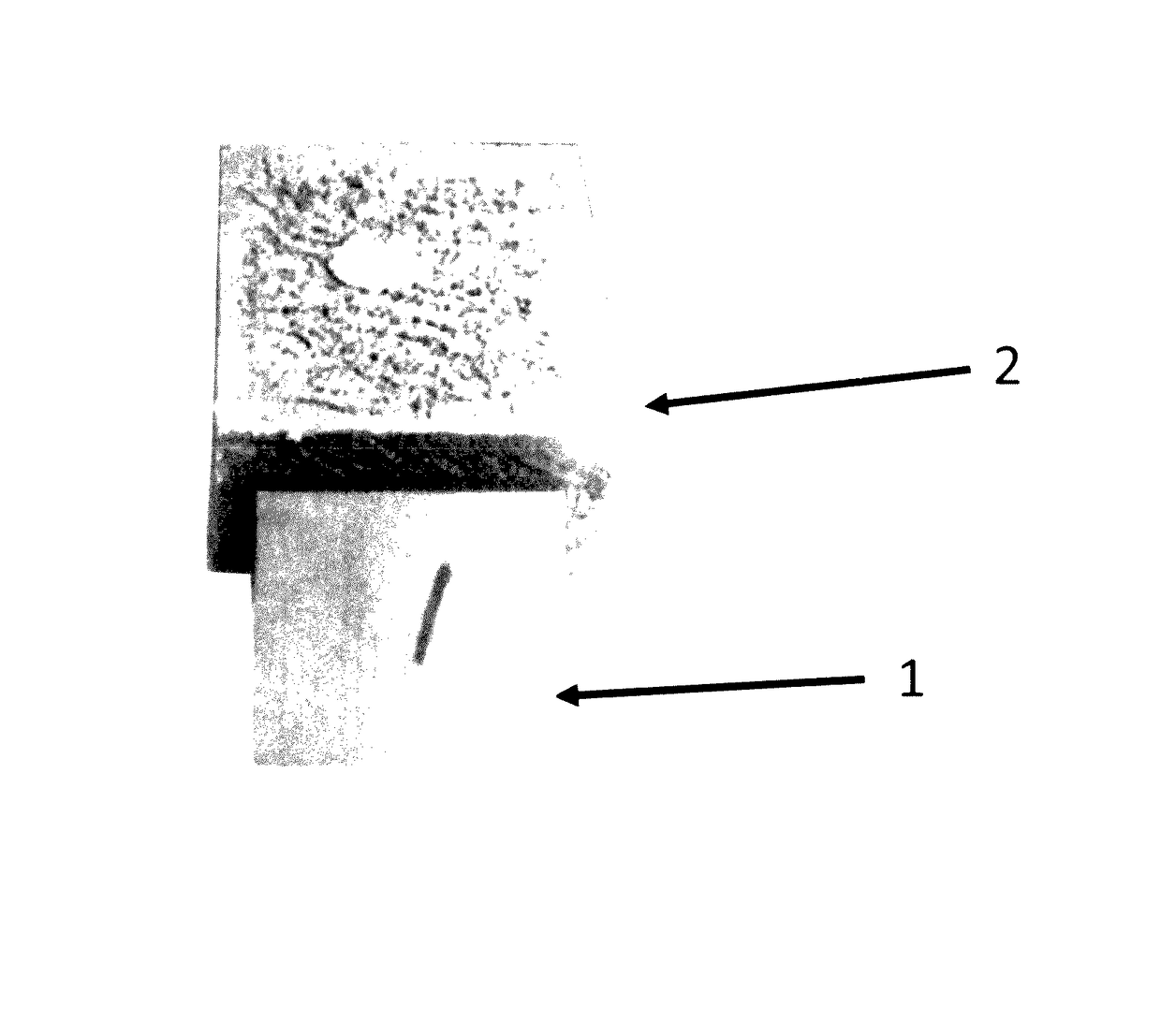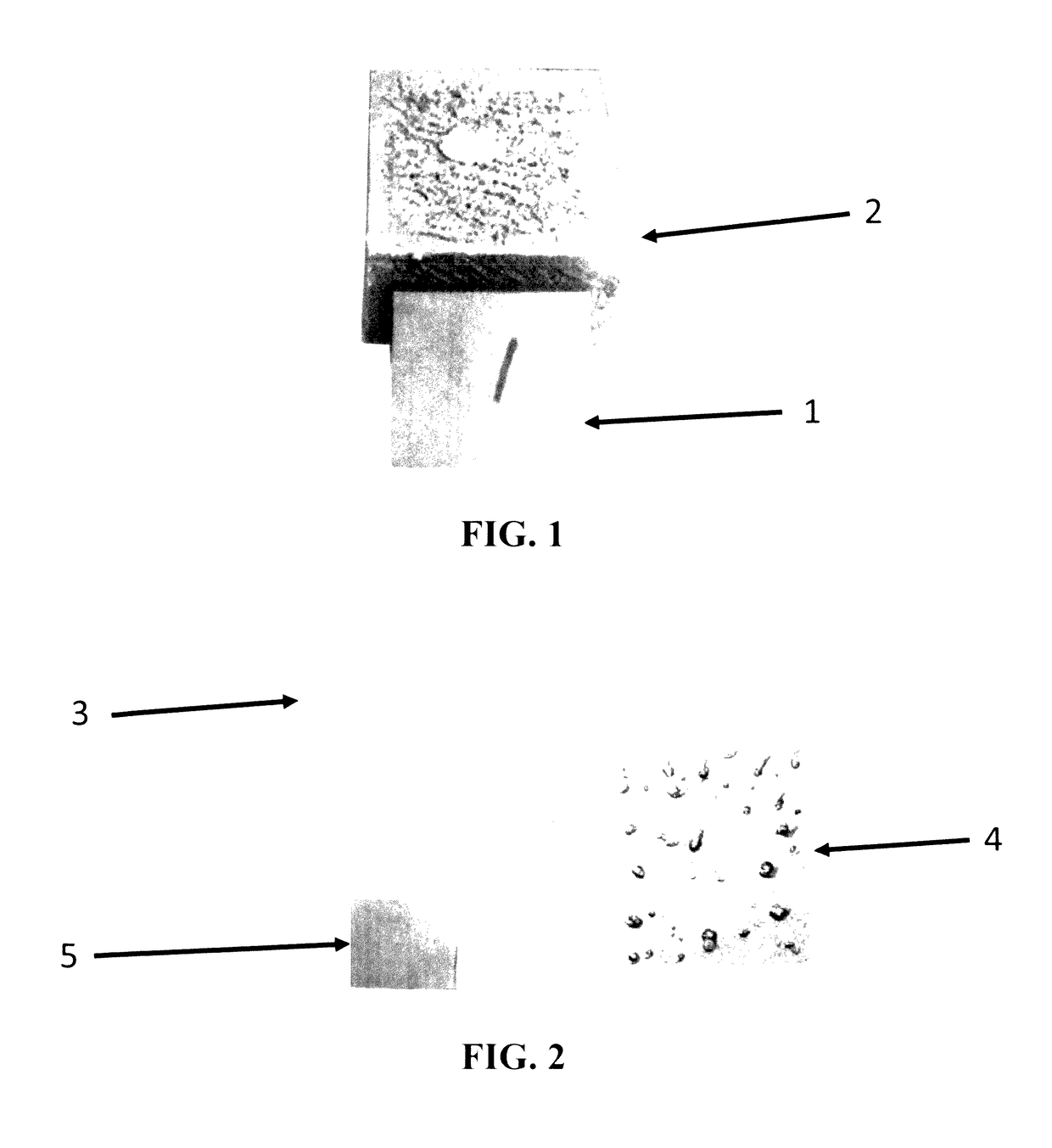Reaction bonded silicon carbide bodies made from high purity carbonaceous preforms
a technology of carbonaceous preforms and reaction bonded silicon carbide, which is applied in the direction of carbides, inorganic chemistry, carbon compounds, etc., can solve the problems of limited oxidation resistance and reduced thermal shock resistan
- Summary
- Abstract
- Description
- Claims
- Application Information
AI Technical Summary
Benefits of technology
Problems solved by technology
Method used
Image
Examples
example 1
[0040]Porous carbonaceous preforms were fabricated according to Example IV, and sent to Advanced Carbon (Topton, Pa.) for heat treatment to 2000° C. in chlorine and 2800° C. in nitrogen. The samples were about 4×5×1.5″ rectangular bodies. Visually after heat treatment at 2000° C., there was no change. After 2800° C. heat treatment, a large amount of porosity was observed indicating volatilization of impurities. If the exotherm achieved for a sample of this size exceeds that required to volatilize the impurities in the preform, a great amount of porosity or areas of excess Si would be produced in the RBSC product.
[0041]To identify the source of the impurities, ICP analyses were performed at Asbury Graphite Mills, where it was determined that the phenolic resin was of very high purity, and likely not the source. Analysis of Castmate, an additive used to decrease casting times of large pieces, showed that there was a significant amount of sodium at 1958 ppm. Sodium was also found to be...
example ii
[0042]The following experiments were performed to determine the amount of dispersant necessary to achieve a uniform dispersion of powder at various powder loadings. Slurries were formed using HPM850 graphite powder and DUREZ PHENOLIC resin at a ratio of 1:1. Slurries containing the wt % of the dispersant and power loadings shown in the following table were formed, and resulted in the given viscosity readings using an in-house Brookfield viscometer:
[0043]
DispersantPowder (graphite + resin)ViscosityAmount (wt %)Loading (wt %)Reading10323.510409 and rising10459 and rising6325 and rising6497 and rising6459 and rising7322.8-3.57343.8-4 7364.5 and rising74010 and rising
[0044]The slurries exhibited non-Newtonian behavior, where the viscosity was dependent upon the duration of shear. In other words, the viscosity of the slurries which were not sufficiently well-dispersed (with enough dispersant and low enough powder loading) increased with time at a constant shear rate (“rising” in table)....
example iii
[0045]Tests were performed to determine the bulk density of the final products using various materials. Theoretically, in order to achieve a composite with 85% SiC-15% Si, the final density would be 3.078 g / cc (if zero porosity). The following table gives measured density (and porosity) results for various infiltrated composites as determined according to Archimedes density measurement procedure. These results indicate that the composites contained slightly less than 85 vol % SiC.
[0046]
Type ofPowder%%PreformApparentSpecificBulkPowderSupplierGraphiteResinDensityPorosityGravityDensityHPM-850Asbury604048%2.97%3.03 g / cc2.94 g / ccM-240Asbury604057%6.24%2.96 g / cc2.77 g / ccTIMREXTimcal455550%1.48%3.04 g / cc3.00 g / ccKS6
PUM
| Property | Measurement | Unit |
|---|---|---|
| particle size | aaaaa | aaaaa |
| particle size | aaaaa | aaaaa |
| temperature | aaaaa | aaaaa |
Abstract
Description
Claims
Application Information
 Login to View More
Login to View More - R&D
- Intellectual Property
- Life Sciences
- Materials
- Tech Scout
- Unparalleled Data Quality
- Higher Quality Content
- 60% Fewer Hallucinations
Browse by: Latest US Patents, China's latest patents, Technical Efficacy Thesaurus, Application Domain, Technology Topic, Popular Technical Reports.
© 2025 PatSnap. All rights reserved.Legal|Privacy policy|Modern Slavery Act Transparency Statement|Sitemap|About US| Contact US: help@patsnap.com


